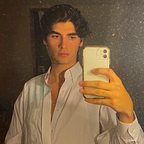Beeple NFT Sale Ushers in a New Chapter for Art History
A piece of digital artwork made by Mike Winkelmann, better known as the digital artist Beeple, was sold by Christie’s in an online auction last Thursday for a staggering $69.3 million. As the first purely digital artwork ever offered by a major auction house, the sale marks several new milestones for the artist, the storied auction house, and the art market.
The bidding began two weeks before the sale on February 25 at a modest $100 bid. Until late 2020, this initial bid was the most Beeple had ever sold his art for. However, after a surge of hundreds of bids in the final moments of the bidding, Beeple watched the price of his art skyrocket from $100 to well over $60 million.
With a final price tag just shy of $70 million, Beeple’s piece “Everydays — The First 5000 Days,” now ranks third amongst the most valuable artworks ever sold by a living artist behind Jeff Koons’ “Rabbit” ($91.1 million) and David Hockney’s “Portrait of an Artist (Pool with Two Figures)” (90.3 million).
“Everydays — The First 5000 Days”
Taking the form of a JPG file, “Everydays — The First 5000 Days,” is a collage of 5,000 unique images that the artist created over 13-and-a-half years, producing and posting a new piece of digital artwork online every day since May 1, 2007. Through the use of software, Beeple stitches together an amalgam of colors and subjects into an intricate, yet harmonious gridded whole.
Upon close inspection of the 319,168,313 byte file, the individual images reveal fantastical and absurd scenes relating to technology, current political events, and to the artists’ personal life. Some of the most memorable images include a crude sketch of Beeple’s Uncle Jim, a fleshy depiction of a lactating Buzz Lightyear, and a rather comical image of Abraham Lincoln spanking a baby Donald Trump. Together, the images paint a compelling visual commentary on life in the 21st century.
Beyond its aesthetic value, “Everydays” was minted as an NFT, or “nonfungible token,” shining the spotlight on a new class of art.
An Overview of NFTs
You can think of an NFT as a sort of digital certificate of a particular object’s ownership and authenticity. This unique digital file or “token” resides on a blockchain, which stores details about a digital asset — whether it is a video clip, a song file, or an image — and records any changes in ownership on a network of secure computer systems. Through blockchain technology, buyers are given a record of ownership and thus, proof of the works’ authenticity at all times.
Furthermore, unlike Bitcoin and other fungible cryptocurrencies, each NFT has a singularly unique marker for the digital asset it tags. This means NFTs cannot be duplicated or replaced with something else. This makes them one-of-a-kind and rare by design.
The sale made Christie’s the first major auction house to ever offer a purely digital NFT and to accept Ethereum—or any cryptocurrency, in general—as payment. And with a final price of approximately 42,329.453 ETH, “Everydays” became the most expensive NFT ever sold. Christie’s adoption of cryptocurrency and the record-breaking sale signals a watershed moment in the development of digital art and for the emerging crypto asset NFT market.
Led by Beeple, the NFT market has multiplied its growth several fold throughout the first few months of 2021 from all of last year, exceeding $400 million in transactions. However, despite its recent resurgence of interest and demand in the art market, NFTs are nothing new.
Since 2017, people have been able to collect NFTs linked to a variety of digital items including, unique virtual cats from Dapper Lab’s “CryptoKitties,” N.B.A. highlight clips from Dapper Lab’s N.B.A. Top Shot, and algorithm-created characters called “CryptoPunks.”
The Future of Collecting
Despite its rising popularity, many traditional art collectors still struggle with the market’s adoption of NFTs, cryptocurrency, and digital art. Unlike paintings, sculpture, and other forms of fine art, collecting digital artworks with NFTs is no longer about one’s relationship and experience to a physical object. This change in the viewing and collecting experience rewrites centuries of history and can inevitably be a bit jarring for many conventional contemporary art collectors.
NFTs have also become the target for criticism against humans’ capitalist tendencies and our need to commodify virtually (no pun intended) everything in society. Sylvain Levy, a collector of Chinese contemporary art, reflected on this idea to the NYTimes, arguing that NFTs are all “about making money,” rather than appreciating the innate connection we have with art as humans.
That being said, NFTs do offer a number of advantages that prove to be revolutionary for the art world and the future of art. With no physical presence, NFTs mark an alluring opportunity for galleries and auction houses to raise significant funds from inventory without having to store, handle, and insure the pieces themselves.
NFTs offer benefits for collectors, too. With authentication coded into the NFT file, collectors can confidently own a piece of art without the hassle of obtaining forensic data or pages of document records to prove so.
As we look to the future, many wonder if the Beeple sale will inspire a future generation of digital art collectors or if it is all just speculative hype. Considering how volatile the NFT and cryptocurrency markets are, it may be too early to know for sure. However, Beeple himself is confident that digital art NFTs are here to stay and more, that they are ushering in “THE NEXT CHAPTER” for art history.
